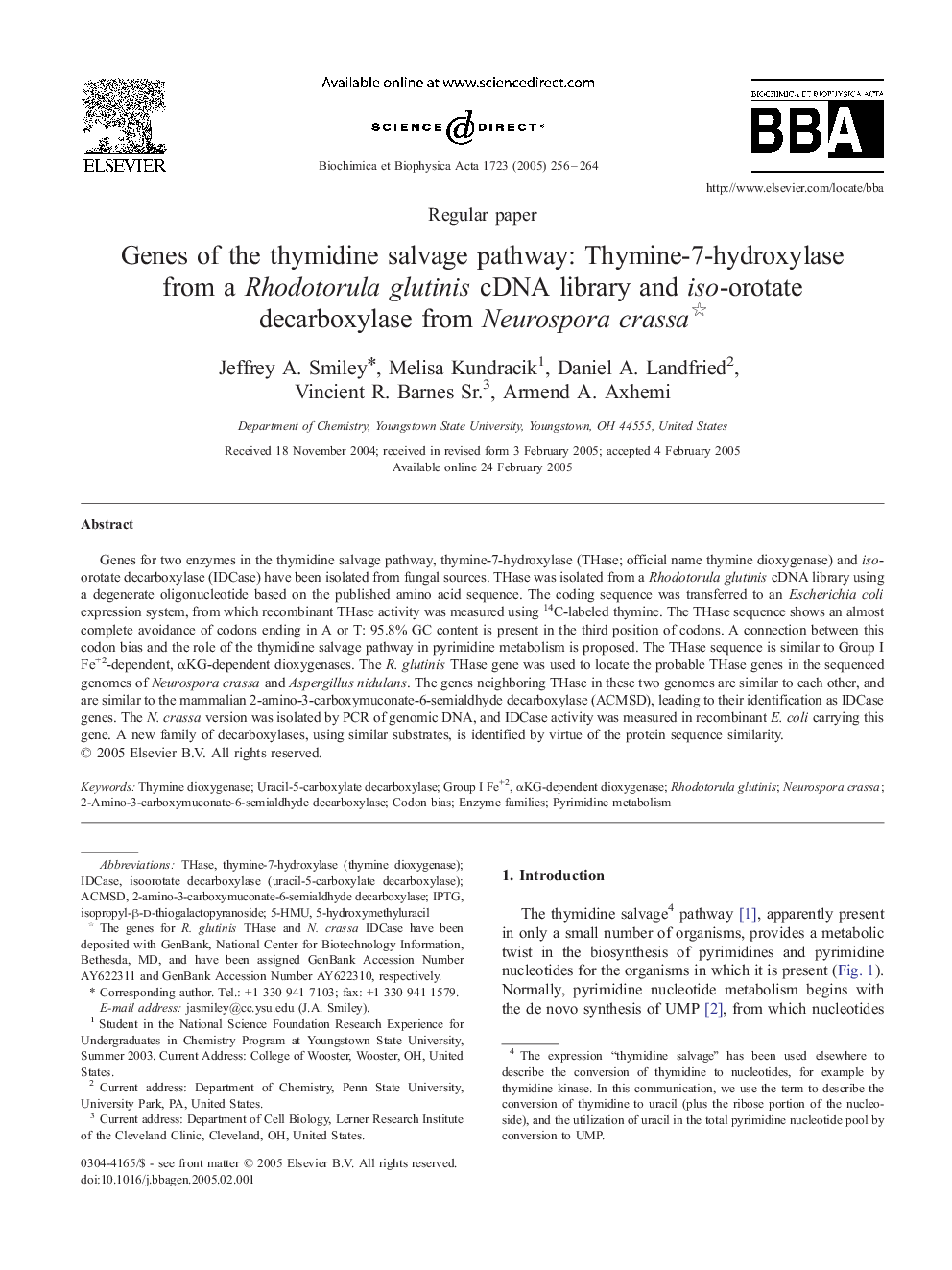| Article ID | Journal | Published Year | Pages | File Type |
|---|---|---|---|---|
| 9886142 | Biochimica et Biophysica Acta (BBA) - General Subjects | 2005 | 9 Pages |
Abstract
Genes for two enzymes in the thymidine salvage pathway, thymine-7-hydroxylase (THase; official name thymine dioxygenase) and iso-orotate decarboxylase (IDCase) have been isolated from fungal sources. THase was isolated from a Rhodotorula glutinis cDNA library using a degenerate oligonucleotide based on the published amino acid sequence. The coding sequence was transferred to an Escherichia coli expression system, from which recombinant THase activity was measured using 14C-labeled thymine. The THase sequence shows an almost complete avoidance of codons ending in A or T: 95.8% GC content is present in the third position of codons. A connection between this codon bias and the role of the thymidine salvage pathway in pyrimidine metabolism is proposed. The THase sequence is similar to Group I Fe+2-dependent, αKG-dependent dioxygenases. The R. glutinis THase gene was used to locate the probable THase genes in the sequenced genomes of Neurospora crassa and Aspergillus nidulans. The genes neighboring THase in these two genomes are similar to each other, and are similar to the mammalian 2-amino-3-carboxymuconate-6-semialdhyde decarboxylase (ACMSD), leading to their identification as IDCase genes. The N. crassa version was isolated by PCR of genomic DNA, and IDCase activity was measured in recombinant E. coli carrying this gene. A new family of decarboxylases, using similar substrates, is identified by virtue of the protein sequence similarity.
Keywords
Related Topics
Life Sciences
Biochemistry, Genetics and Molecular Biology
Biochemistry
Authors
Jeffrey A. Smiley, Melisa Kundracik, Daniel A. Landfried, Vincient R. Sr., Armend A. Axhemi,
